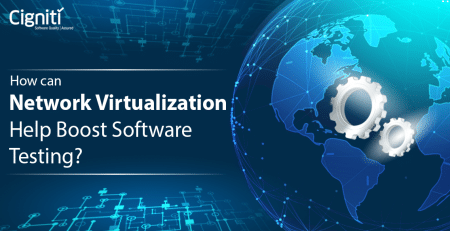The Future of Aviation Industry in a New Age of Technology
The aviation industry is not untouched by the effects of the digital wave, which has created a ripple effect across industries and organizations. However, it is not among the pioneers of the digital revolution. Instead, it simply reacts to the new wave of technology and follows the trends to stay up to date with the demands and expectations of modern passengers.
The future of aviation holds exciting prospects, with advancements in electric propulsion, autonomous flight, and sustainable fuels poised to transform the way we travel by air.
In the past few years, low-cost carriers have become the preferred choice for passengers. The travelers now expect a completely personalized experience right from the booking stage until after their journey. The aviation industry can leverage Sentiment Analysis to determine customers’ needs and formulate their strategy accordingly.
The International Air Transport Association (IATA) has determined the technologies and factors that will define the future of aviation industry in its recent report on “Future of the Airline Industry 2035.” The report identified cybersecurity, robotics and automation, 3D printing, new manufacturing techniques, virtual reality, augmented reality, IoT, big data, alternative fuels and energy sources, new aircraft designs, alternative modes of rapid transit, and geospatial technology to be prominent in the future of airline industry.
Upcoming innovations in aviation industry have five major drivers – Society, Environment, Politics, Economy, and Technology. While the societal, environmental, political, and economic factors are somewhat impossible to control, technology is becoming the prime concern for the aviation industry. With futuristic, alternate travel modes such as Hyperloop and the growing prominence of highly sophisticated AR/VR technology, the aviation industry is in a rather dynamic state. Although air travel is still the preferred mode for long-distance journeys, the tables might turn on the sector if it fails to adapt and align with the latest technologies.
The advent of groundbreaking technological factors affecting the aviation industry promises to revolutionize air travel, making it faster, safer, and more efficient than ever before. Let us try to get a picture of how the aviation sector will look like in the coming years:
- Artificial Intelligence
A new market study predicted a CAGR of 46.4% for AI in the aviation market by 2023. AI is being used to deliver a personalized traveling experience to passengers to generate maximum customer satisfaction. Artificial intelligence is personalizing, optimizing, and upscaling the digital interactions between airlines and passengers. AI and ML applied to the passengers’ social sentiment is helping the airline industry to curate their services as per the needs of the passengers.
- Big Data
The shift towards democratizing data empowers the sector to make strategic decisions backed by facts. Coupled with AI and ML, big data is helping the industry to predict and forecast consumer behavior to fine-tune their strategy. As data is gaining a reputation as the most valuable asset in the digital age, it is only wise to proactively utilize data mining techniques to develop a robust plan that is highly likely to succeed.
- Automation
Pilotless planes can soon become a reality as machines become smarter with the latest technological advancements. Hybrid RPA, integrated with the cognition of AI, can make it feasible for an aircraft to complete a journey without manual intervention. Even today, planes complete a significant part of the flight on auto-pilot mode, with manual pilots taking control only during takeoff and landing. However, given the uncertainties and risks involved during a flight, it is doubtful that a flight in the future will not have any manual pilots on board. The unpredictable nature of machines makes them unreliable during an emergency, thus requiring a human pilot to man the plane and complete the flight safely.
- Workforce and skills
Although we are moving towards the future of advanced planes and automated flights, it is impossible to successfully realize the vision without bridging the existing skill gap in the present workforce. From pilots, employees, and engineers to air traffic controllers and safety inspectors, everyone needs to upskill their capabilities to stay relevant and competent in the upcoming digital future of aviation. There will be a lot of legal and moral changes involved to oversee the transition from manual to automation. With the prevalence of automation, some jobs in the sector will be taken over, but new positions for manual resources will also be created.
- Biometrics
Biometric technologies such as facial recognition, fingerprint authentication, and retinal scanning will become the default way of verification. The verification process will soon become paperless with the integration of biometric systems for border control, airport check-ins, onboarding, and migration formalities. This will further extend to the baggage claim process, allowing passengers to keep real-time track of their luggage.
- In-flight connectivity
The world is increasingly getting interconnected, and connectivity is becoming a business necessity. The airline passengers will expect even in-flight connectivity in the coming days, eliminating the need to disconnect phones in the air. After the free Wi-Fi services across airports, airlines are also offering the provision inside the flight. Recently, Delta Airlines took the initiative to provide Wi-Fi on all its domestic and international flights to let passengers experience an entertaining flight journey.
In Conclusion
Although the technological factors affecting airline industry are advancing and the industry is stepping forward to adopt them in the most optimal way, everything can fall flat without effective implementation. Extensive and meticulous testing is critical to ensure a successful adoption and implementation. As Delta Airlines’ Director of Onboard Product, Ekrem Dimbiloglu, says about effectuating on-board connectivity, “Testing will be key to getting this highly complex program right – this takes a lot more creativity, investment and planning to bring to life than a simple flip of a switch.”
The upcoming innovations in aviation industry also bring newer threats in the scope of cybersecurity and user privacy. To avoid getting attacked by such threats and vulnerabilities, it is essential that the industry players take a proactive approach and integrate a robust testing plan within their plans for the future.
Cigniti’s Airline TCoE is backed by an experienced staff with deep domain expertise in managing several advanced airline IT solutions such as new generation Airlines Passenger solutions, Airlines Revenue Accounting, airline booking, e-commerce website, and Mobile Apps for different platforms. The testing process and phases vary by development methodologies. Cigniti has a process that can be customized per the requirements, irrespective of the methodology used.
Get Cigniti onboard your flight to the digital future. Connect with us now.





Leave a Reply